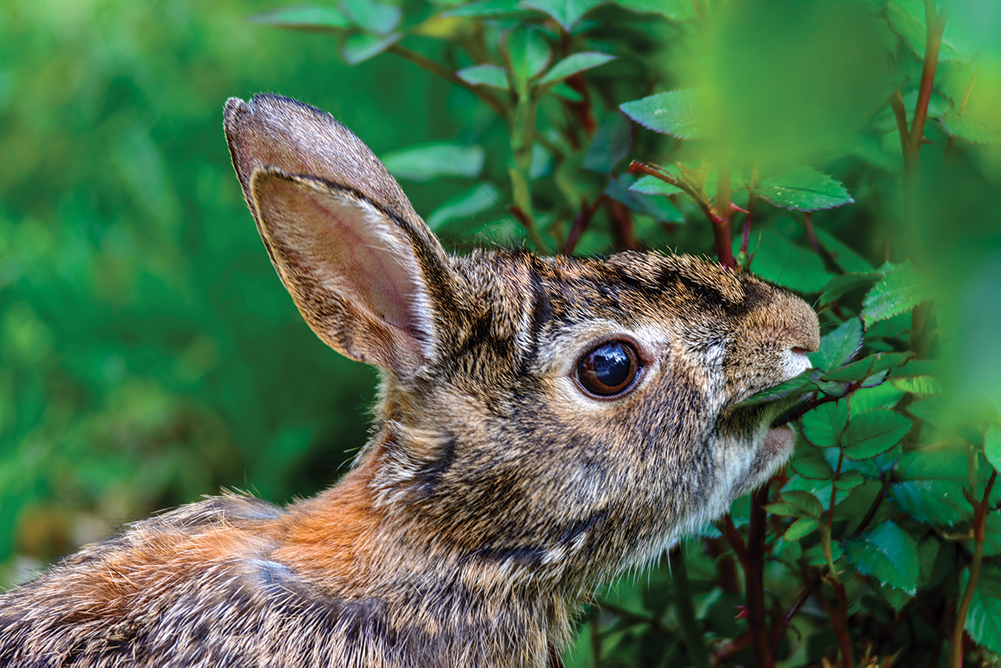
Wildlife-friendly gardening is a splendid way to preserve and protect nature, but if they plunder our gardens, dig up our lawns or move into our houses, wildlife can seem more like foes than friends. Luckily there are ways to manage this conflict without un-friending nature.
According to experts, habitat loss drives much of the conflict between humankind and wildlife — and is a primary reason to embrace wildlife-friendly gardening. When natural ecosystems are destroyed, wildlife must look elsewhere for food, water, shelter and safe places to raise their young and they often find those in our landscapes and homes. That interaction can be a good thing, or not.
Occasionally wildlife species pose a threat to humans, pets and even other wild species, but usually they become nuisances by damaging plants, crops or structures. According to Bence Carter, a regional agent with the Alabama Cooperative Extension System’s wildlife and forestry team, how we react in these situations varies from one person to the next.
“When it comes to wildlife damage, everyone has their own threshold of damage before it warrants taking action,” Carter says. For some, a nibbled tomato plant is too much damage. Others are willing to share the entire landscape with wildlife but draw the line when they move into the attic.
Whatever the trigger, Carter says it’s important to take stock of the situation before taking action. “Knowing what’s causing the problem is the first step to any management plan,” he says. It can also save time, money and frustration. “You don’t want to build a six-foot fence for a rabbit.”
Short of catching a critter in the act — which can be difficult, especially with noc- turnal species — the best way to make a proper ID is through detective work. Study tracks and signs of damage, such as feeding or burrowing habits, for clues. Or skip the guesswork by using a wildlife camera or other surveillance device.
Once the problem animal is identified, there are a number of ways to address the situation without evicting wildlife. It may be as simple as keeping tight lids on trash cans, not leaving bowls of pet food outside or reducing the amount of wildlife-friendly habitat, such a brush piles and tall grass, in the yard.
Creating a natural-looking landscape using curved, rather than straight, lines for garden beds and mixing a variety of different plants in each bed can mask damage. Choosing plants that are resistant or tolerant to wildlife feeding is also helpful.
For a more assertive approach, try harassing the culprits away using scarecrows, motion-activated lights or sprinklers and the like. Commercially available repellents made from foul tasting or smelling substances can also be effective as can some nontoxic home remedies, like the after-shave-soaked cloths that Alabama Livingreader Martha Dooley uses to control deer. However, Carter noted that the efficacy of these methods varies depending on the wildlife species and other factors, including whether wildlife becomes habituated to the deterrent. Exclusion devices such as fences, netting and chimney caps can be quite effective at keeping critters out of gardens, yards and structures. Choosing the right kind of fencing is important, though, and these strategies can be expensive.
If all else fails, removal (live-trapping and relocation) and extermination (poisons, lethal traps, shooting, etc.) are also options,
however they pose some challenges. For example, it’s illegal in Alabama to relocate most wildlife species, and some extermination methods can pose risks to people, pets and other wildlife species. In these cases, it may be best to hire a certified wildlife removal specialist.
One thing is for certain: wildlife are important members of our world so the more we know about them, the less likely we are to come in conflict with one another. Information on living with wildlife is available from the Extension System (aces.org), The Internet Center for Wildlife Damage Control (icwdm.org), many state and federal wildlife and conservation agencies and also from organizations such as the National Wildlife Federation (nwf.org).
July Tips
- Plant seeds for late summer and early fall vegetables and flowers.
- Plant pumpkins now for an October harvest.
- Divide overcrowded irises and other perennials.
- Keep an eye out for insect and disease problems.
- Harvest summer vegetables and fruits frequently.
- Keep outdoor container plants well-watered.
- Pulls weeds regularly and before they go to seed.
- Keep bird baths and feeders full.




